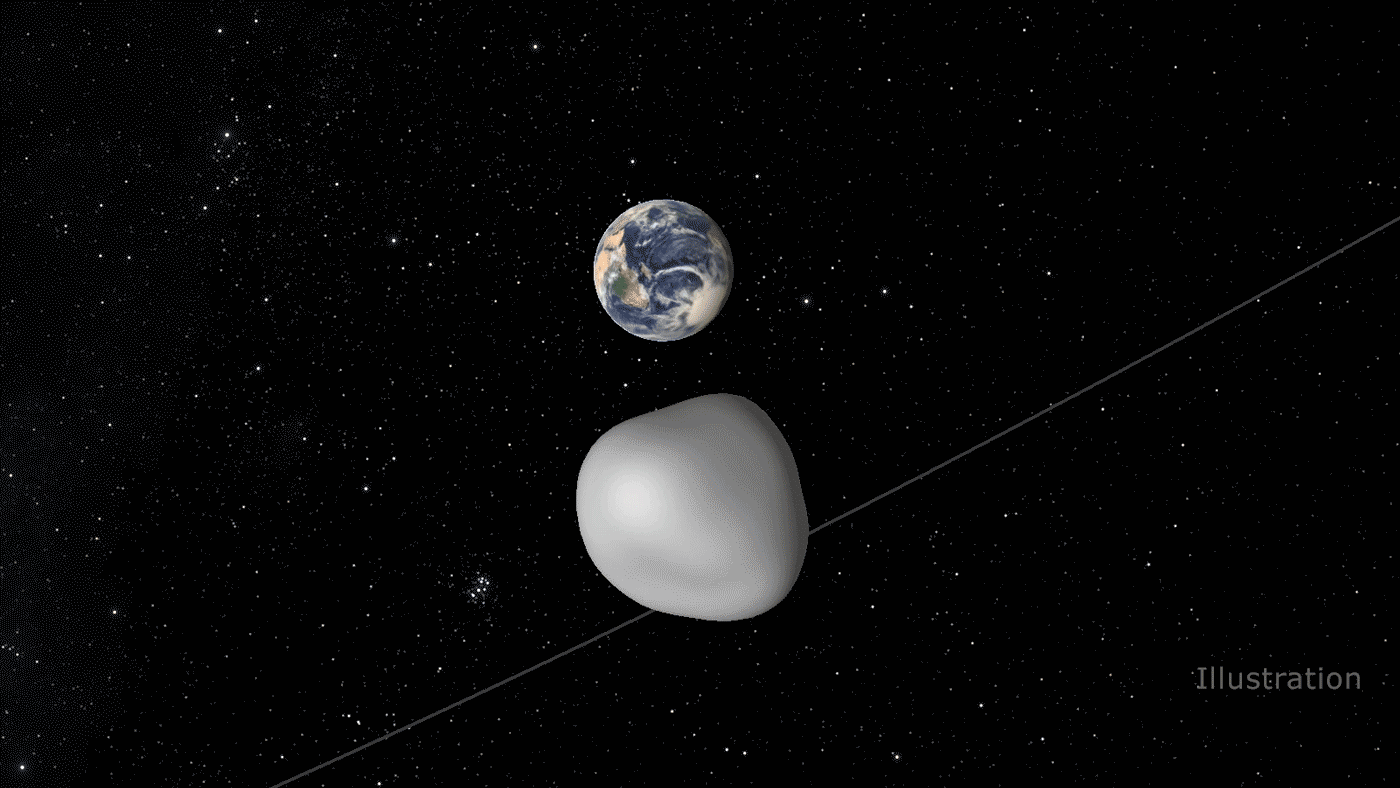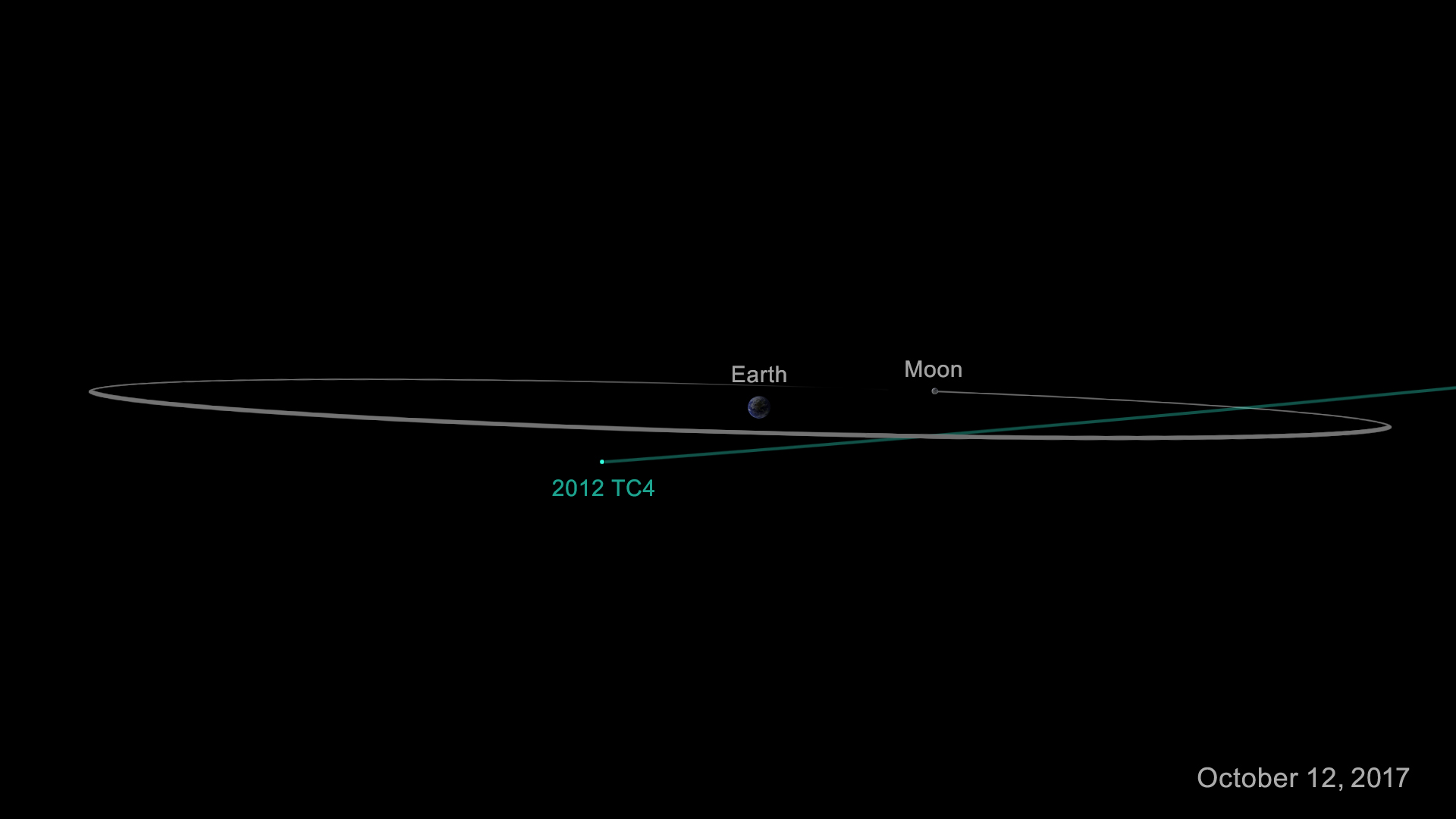A Close Asteroid Flyby of Earth in October Will Give Scientists Tracking Practice
Scientists around the world will be watching especially keenly when a house-size asteroid zooms safely past Earth this October.
The asteroid 2012 TC4, which is thought to be between 33 feet and 100 feet (10 to 30 meters) wide, will give Earth a close shave on Oct. 12, potentially coming as close to our planet as 4,200 miles (6,800 kilometers), NASA officials said.
There's no danger of an impact by the space rock on this pass. But astronomers will be following the flyby closely, as a way of testing the international asteroid detection and tracking network. [In Images: Potentially Dangerous Asteroids Near Earth]

"This is a team effort that involves more than a dozen observatories, universities and labs across the globe so we can collectively learn the strengths and limitations of our near-Earth object observation capabilities," project leader Vishnu Reddy, of the University of Arizona's Lunar and Planetary Laboratory in Tucson, said in a statement.
"This effort will exercise the entire system, to include the initial and follow-up observations, precise orbit determination and international communications," Reddy added.
As its name suggests, asteroid 2012 TC4 was discovered in 2012, by the Panoramic Survey Telescope and Rapid Response System (Pan-STARRS) in Hawaii. But researchers were able to track the asteroid for just seven days back then, around the time of a previous Earth flyby that took place on Oct. 12, 2012 — exactly five years before this upcoming one — and it hasn't been seen since.
As a result, 2012 TC4's orbit isn't known precisely. Indeed, estimates of its distance from Earth during the upcoming flyby range from the aforementioned 4,200 miles to 170,000 miles (270,000 km), or nearly two-thirds of the distance from our planet to the moon, NASA officials said. (The moon lies about 239,000 miles, or 384,600 km, from Earth.)
Get the Space.com Newsletter
Breaking space news, the latest updates on rocket launches, skywatching events and more!

"This is the perfect target for such an exercise, because, while we know the orbit of 2012 TC4 well enough to be absolutely certain it will not impact Earth, we haven't established its exact path just yet," Paul Chodas, manager of NASA's Center for Near-Earth Object Studies (CNEOS) at the Jet Propulsion Laboratory in Pasadena, California, said in the same statement.
"It will be incumbent upon the observatories to get a fix on the asteroid as it approaches, and work together to obtain follow-up observations that make more refined asteroid orbit determinations possible," he added.
For perspective: 2012 TC4 is in the same general size range as the unnamed space rock that exploded over the Russian city of Chelyabinsk in February 2013, injuring more than 1,200 people. Astronomers think the Chelyabinsk impactor was about 65 feet (20 m) in diameter.
2012 TC4 completes one lap around the sun every 609 days.
Follow Mike Wall on Twitter @michaeldwall and Google+. Follow us @Spacedotcom, Facebook or Google+. Originally published on Space.com.
Join our Space Forums to keep talking space on the latest missions, night sky and more! And if you have a news tip, correction or comment, let us know at: community@space.com.

Michael Wall is a Senior Space Writer with Space.com and joined the team in 2010. He primarily covers exoplanets, spaceflight and military space, but has been known to dabble in the space art beat. His book about the search for alien life, "Out There," was published on Nov. 13, 2018. Before becoming a science writer, Michael worked as a herpetologist and wildlife biologist. He has a Ph.D. in evolutionary biology from the University of Sydney, Australia, a bachelor's degree from the University of Arizona, and a graduate certificate in science writing from the University of California, Santa Cruz. To find out what his latest project is, you can follow Michael on Twitter.









